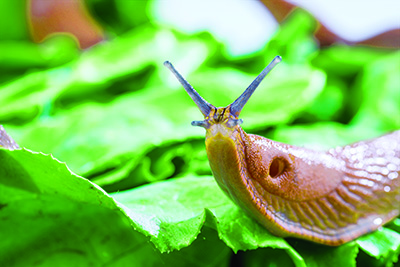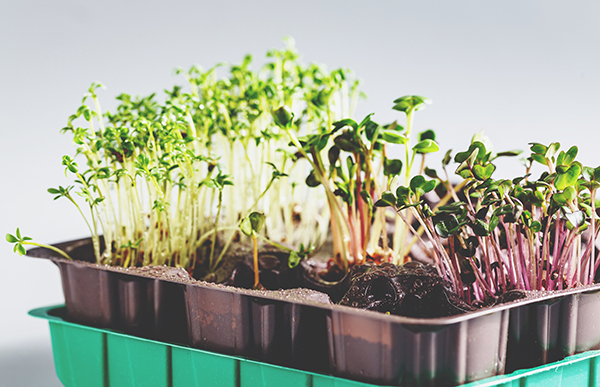By Diane Hyde, OSU Linn County Master Gardener
Temperatures are warming and there are sunny days to do some yard and garden cleanup. As we pick up wind-blown debris and pull up weeds clusters of slug eggs are found. Some species of slugs bury the eggs underground so they are not found until the little slime-makers emerge. Slugs live under or in nutrient-poor soil, bark, logs, pots, rocks or any dark, moist areas. Some, like the spotted slug, hang out in dry areas eating dead organic matter. Cleaning up debris and setting traps near their habitats can reduce their populations.

A good time to control slugs is when they are mating, before eggs are laid. Each slug can lay up to 300 eggs in a season, as clusters or a single egg. The life cycle is clear eggs, milky eggs, white eggs, tiny slugs, tiny slugs, bigger slugs, more eggs and more slugs. When clusters of slug eggs are found dispose of them in the garbage and let them grow up to eat at the landfill, where they can be useful. The only benefit of slugs in the home landscape is enrichment of soil with their excrement. A handful of worms is preferred for that function.
Look for the slugs in their hiding places. Make a game of it with children, even more fun with a flashlight at night. Keep grass mowed to reduce moisture and increase light at ground level. Slugs and snails are territorial, returning to their winter space and egg sites after feeding on your plants. Look for them where they have been seen before. Follow their trails, like Japanese ground beetles, snakes and frogs do when they seek to eat slugs and slug eggs. Slugs will range 100 feet or more from their home base. They can travel about six inches per minute, and some species have been clocked at up to 14 miles/hour by OSU researchers.
Hand picking is effective for slug control when we have the time. Actually, using tongs and gloves is better than fingers. To remove slug slime from skin, wipe with vinegar on a paper towel; soap and water are ineffective.
Some people stab slugs in the front end where their nerve ganglia serve as a simple brain. Others pour salt on them or spray them with vinegar and watch them squirm in pain. The salt and vinegar will also burn nearby plants, though. Throwing slugs and snails over the fence does not help because they will find their way home. Egg shells and coffee grounds irritate the tender foot of a slug, so they just go around them to get to your hostas and veggies.
Make a simple slug trap from a plastic (cottage cheese type) container. Cut holes in the top big enough for the slug to get into. Put sugar water, yeasty water, chopped cucumbers, aromatic fruits or cat food into the container. Canned salmon cat food is a preferred flavor, but will attract other critters. Save your beer for a party. Research at OSU shows that sugar water or cucumbers attract more slugs than yeasty beverages. Bury the container up to the lid so the slug can crawl in but cannot crawl out easily. Check the trap regularly and dispose of the captives.
A beneficial nematode has been found that kills slugs and snails by penetrating breathing pores, but more research is necessary before it becomes available to farmers and gardeners.
There are chemical slug baits in the garden stores that will paralyze , immobilize, dehydrate or, in higher concentrations kill slugs and snails. However in moist cool weather they can recover. The chemicals will also affect or kill other animals that eat the bait and affected slugs. An OSU entomologist says that young slugs don’t seem to take the bait when fresh green feed is available.
For more information about snail and slug abatement research, search at http://extension.oregonstate.edu. There are publications and recent videos that shed light on mollusk behaviors and how to combat them.
